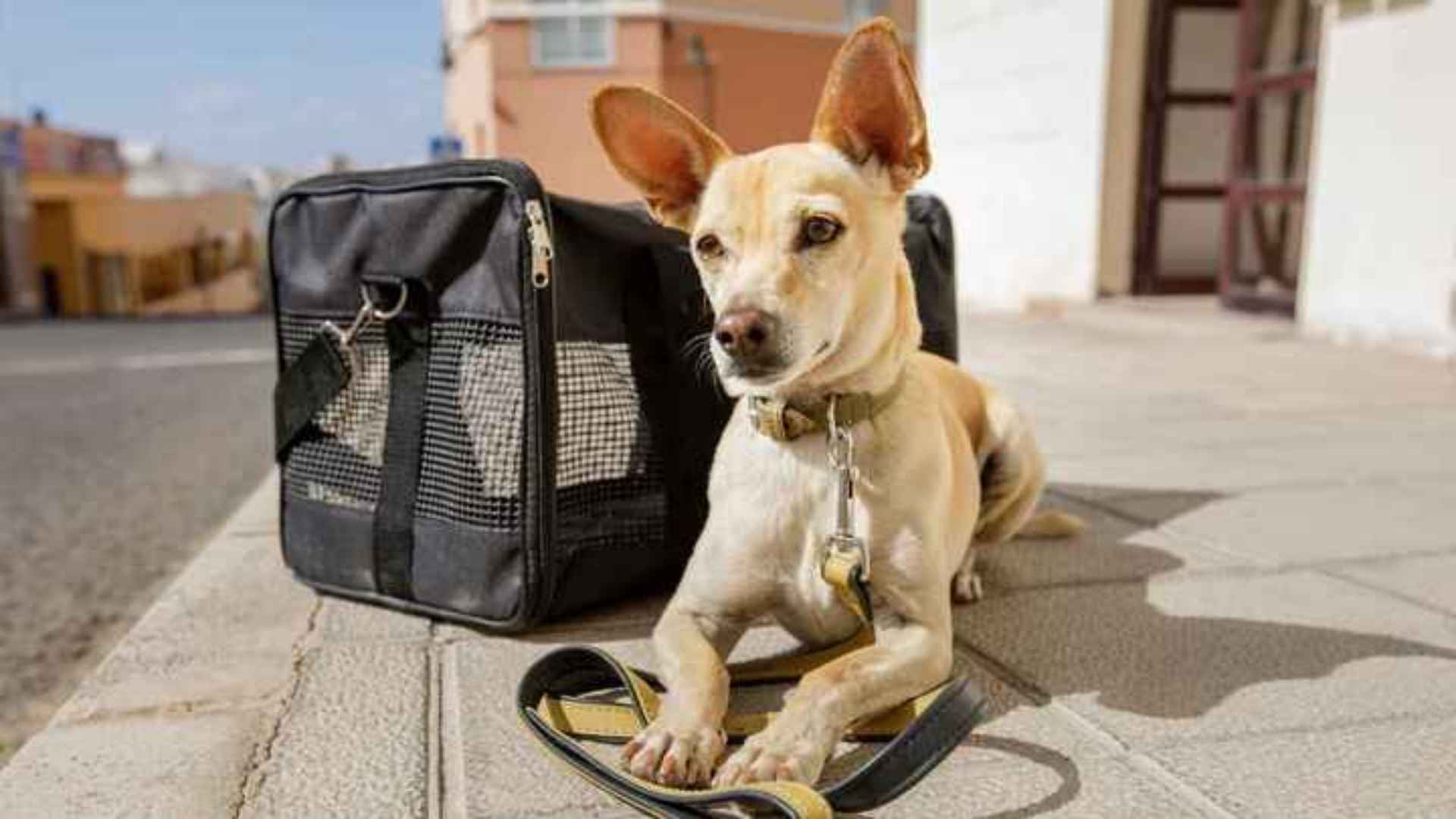Air travel can be stressful for pets, especially dogs, but for some breeds, it goes beyond just anxiety—it can be a serious health risk. Many major airlines have strict policies banning or restricting certain dog breeds from flying, particularly in the cargo hold. These rules aren’t random; they’re based on important health and safety concerns.
Brachycephalic breeds, or snub-nosed breeds, have shortened airways that make breathing difficult during stressful situations, high temperatures, or poor ventilation. Meanwhile, some breeds are restricted because they’re classified as fighting or restricted breeds.
Thinking of flying with your pup? Not all dog breeds are cleared for takeoff. Let’s take a look at the dog breeds that most airlines don’t allow to fly—and why.
Dog Breeds Not Allowed to Fly
1. American Pit Bull Terrier
Breed Profile
Origin: United States
Height: 17-21 inches
Weight: 30-60 pounds
Lifespan: 12-16 years
Group: Often grouped under terriers
The American Pit Bull Terrier is a strong, medium-sized dog with a muscular build and a sleek, short coat. Known for their power and athleticism, they are also incredibly eager to please and full of energy.
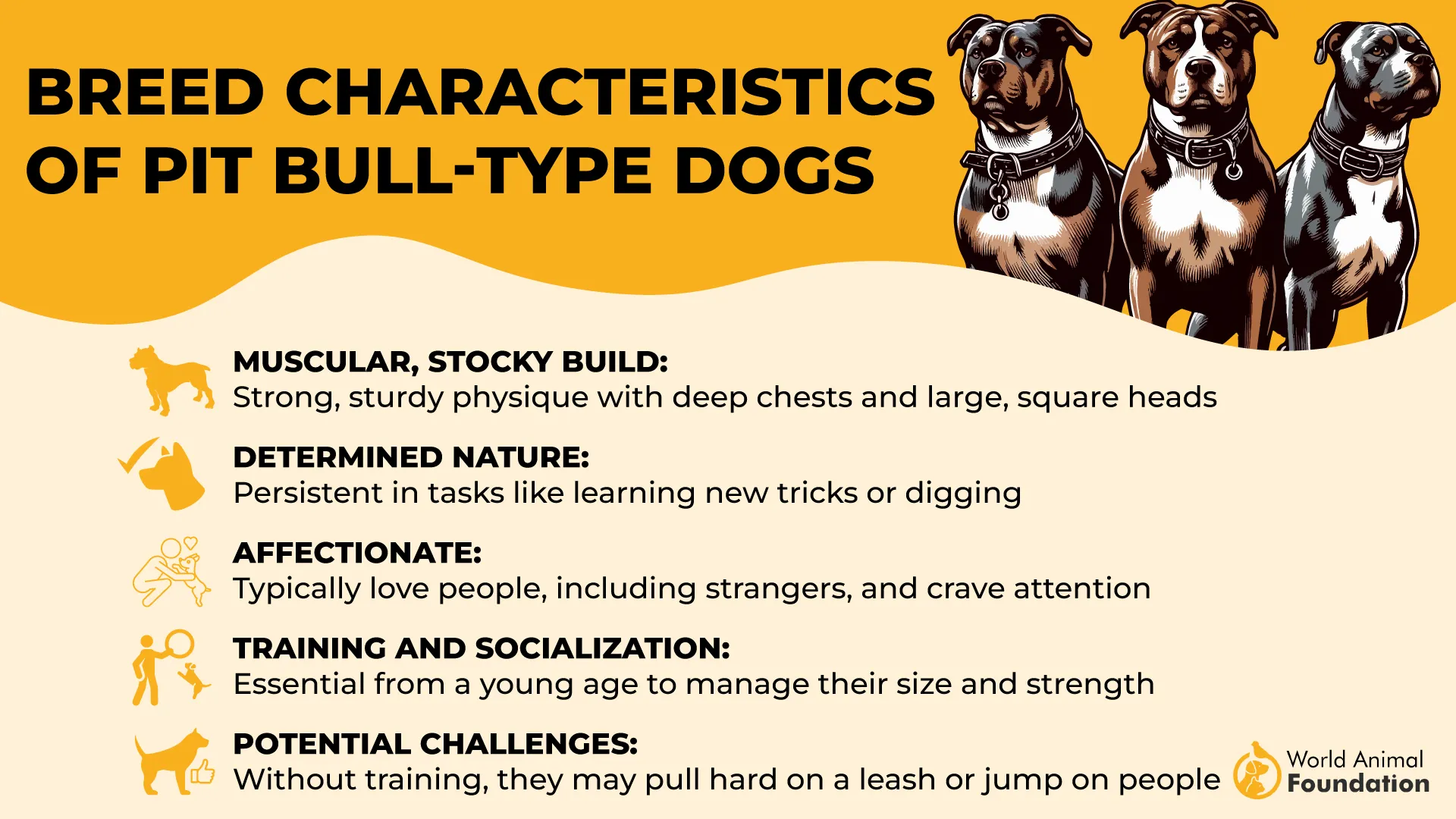
According to UKC, APBTs make loving and loyal family pets, especially known for their affection toward children. However, due to their strength and potential for dog aggression, early socialization and consistent obedience training are essential for a well-balanced companion.
Why are they restricted?
The American pit bull terrier is frequently included on or banned from flying lists due to its:
Strong muscular build
History as a fighting dog
Perception of aggressive behavior
Powerful jaw strength
Even when well-trained, many airlines view this breed as high-risk, especially during pet transportation in cargo. Most airlines refuse to fly pit bull terriers, citing safety concerns. Mixed breeds with pit bull characteristics may also be restricted under general breed restrictions.
2. Boxer
Breed Profile
Origin: Germany
Height: 21.5 – 25 inches
Weight: 50-80 pounds
Lifespan: 10-12 years
Coat: Short and Smooth
Group: Working Group (AKC)
The boxer is a popular yet often restricted breed on many airlines due to its snub-nosed features and energetic temperament. While known for being loyal, friendly, and intelligent. Boxers are classified as brachycephalic, which puts them at serious risk during air travel.

Why are they restricted?
Shortened nasal passages make breathing hard during flight.
Susceptible to heatstroke and respiratory distress in poorly ventilated cargo compartments.
They are also highly energetic, which may increase stress and physical exertion during transport.
The unfamiliar sights, sounds, and sensations of air travel can cause significant stress in brachycephalic breeds, which often leads to or worsens existing respiratory problems. Their shortened airways make it harder to cope with the added pressure and anxiety of flying. Boxers are on the no-fly list of several major airlines due to these health concerns.
3. Staffordshire Bull Terrier
Breed Profile
Origin: England
Height: 14-16 inches
Weight: 24-38 pounds
Lifespan: 12-14 years
Coat: Smooth, short coat
Group: Terrier Group (AKC)
The Staffordshire bull terrier is a medium-sized dog. It is known as the muscular breed for its strength, courage, and loyalty. Despite being affectionate with humans and excellent with children, it is often banned from air travel due to its classification among not allowed breeds and its close relations to the Pit bull family.
Why are they restricted?
They were historically bred for bull-baiting and dog fighting, leading to safety concerns.
Perceived as aggressive due to muscular build and reputation
Many airlines include them under fighting dogs or pit bull-type dogs, regardless of individual behavior or training.
This breed is listed on multiple airlines’ no-fly lists. Staffordshire bull terriers face widespread flight restrictions. These restrictions exist to safeguard dogs from the potential dangers of air travel, such as unpressurized cargo compartments and high stress levels. For certain breeds, these conditions can lead to serious health complications, making flight unsafe.
4. Boston Terrier
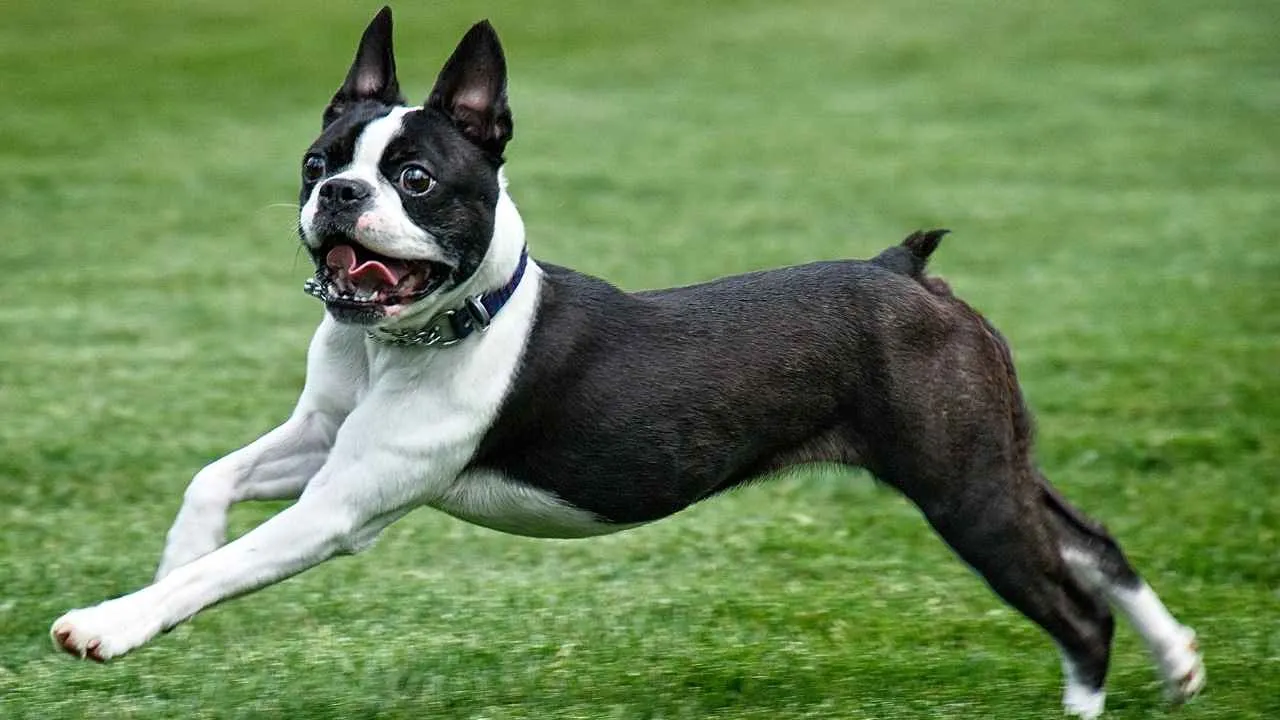
Breed Profile
Origin: United States
Height: 15-17 inches
Weight: 12-25 pounds
Lifespan: 11-13 years
Coat: Short, smooth coat
Group: Non-sporting Group (AKC)
The Boston terrier, often referred to as the “American Gentleman”, is a small, friendly, and lively breed. Despite its charming personality, it is frequently listed among snub-nosed dogs banned or restricted from flying due to its broad skull structure.
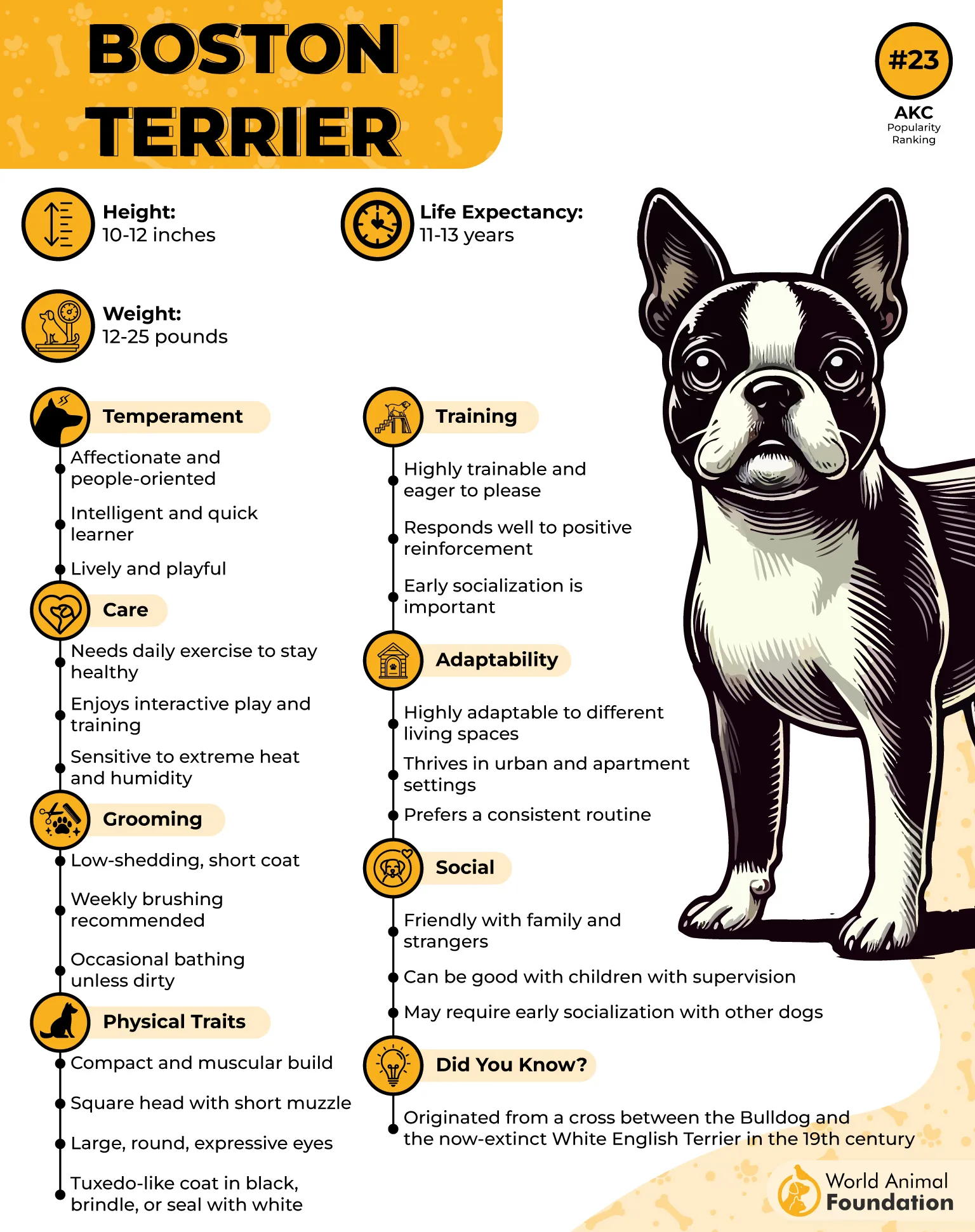
Why are they restricted?
They are short-nosed dogs, which can cause low breathing
Struggle to regulate body temperature, especially in stressful or hot environments
High risk for heatstroke, respiratory distress, and other snub nosed animals health issues
Not suitable for transport in the cargo hold due to poor air quality.
Most of the Airlines only allow Boston terriers in the cabin with a pet carrier and a proper health certificate. While some airlines may permit Boston Terriers to fly in the cabin, transporting them in the cargo hold is typically discouraged or even prohibited. Their short-nosed (brachycephalic) anatomy makes them more vulnerable to breathing difficulties and stress-related complications during air travel.
5. King Charles Spaniel
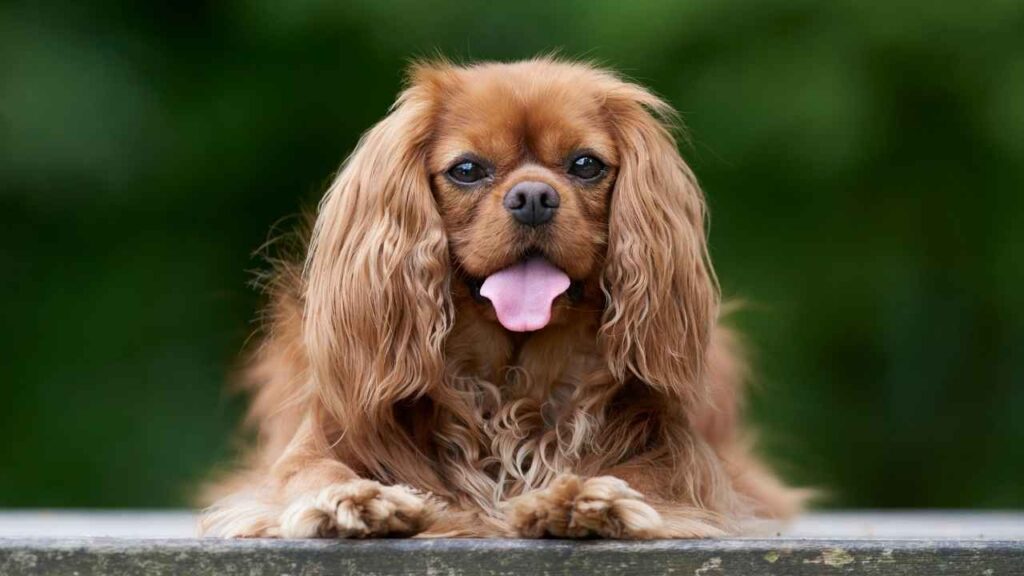
Breed Profile
Origin: United States
Height: 12-13 inches
Weight: 13-18 pounds
Lifespan: 12-15years
Coat: Silky, medium length
Group: Toy Group (AKC)
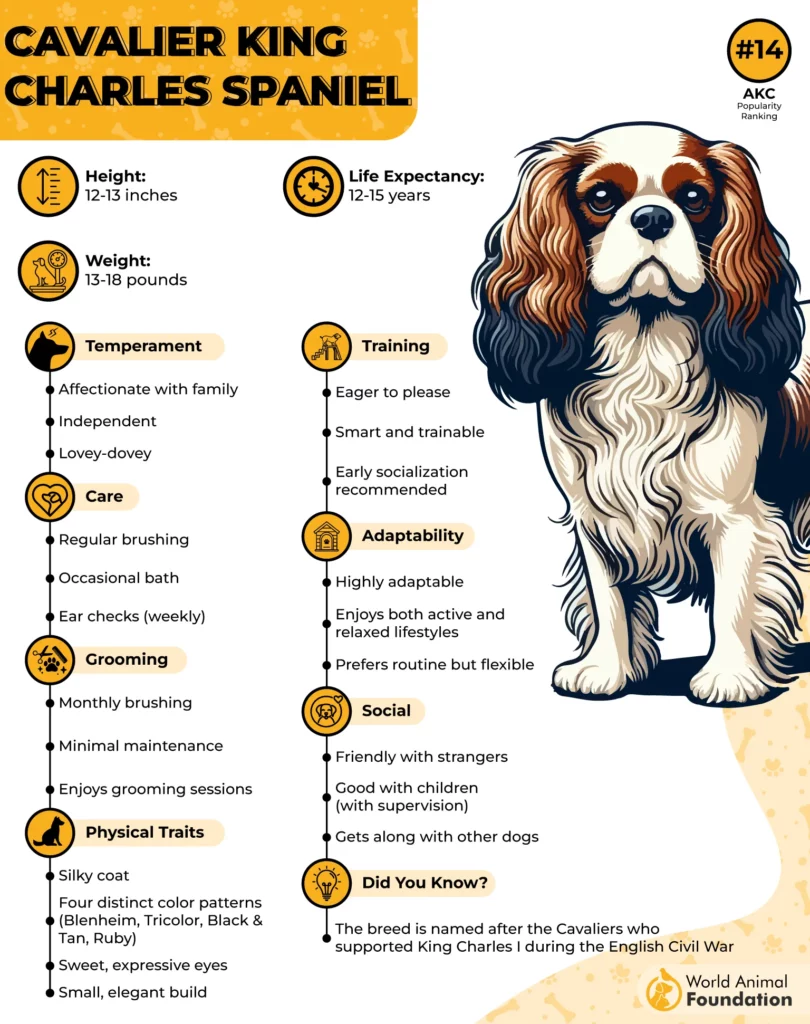
The Cavalier King Charles spaniel is an affectionate and graceful toy breed, adored for its gentle nature and expressive eyes. Despite its elegance, it belongs to the group of broad-headed breeds, making it prone to respiratory issues that pose serious risks during air travel.

Why are they restricted?
There are anatomical challenges, such as elongated soft palate and hard palate malformations hinder breathing.
Prone to heat intolerance and stress-induced breathing
Unsafe for travel in the cargo area with limited problems
Cavalier King Charles Spaniels are prone to specific health issues, such as mitral valve disease (a common heart condition). The stress and environmental factors associated with air travel can worsen these conditions, making flying risky for this breed. Many pet owners are urged to consider ground transportation or live animal specialty services for this breed.
6. American Staffordshire Terriers
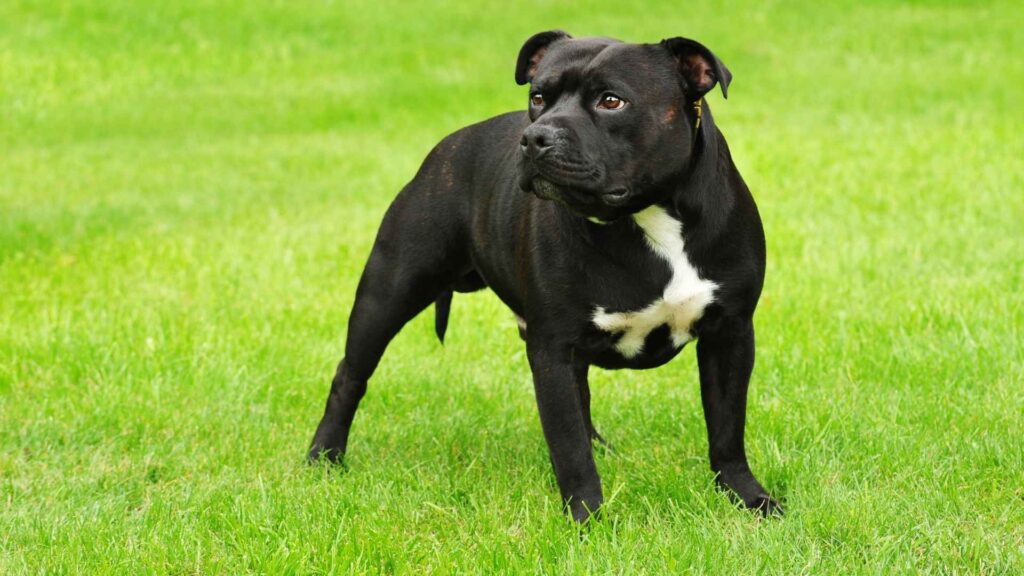
Breed Profile
Origin: United States
Height: 17-19 inches
Weight: 40-70 pounds
Lifespan: 12-16 years
Coat: Short and smooth
Group: Terrier Group (AKC)
The American Staffordshire terrier is a powerful, loyal, and courageous breed. Though known for being affectionate with families, it is frequently listed among banned breeds due to its size, strength, and historical ties to fighting dogs.
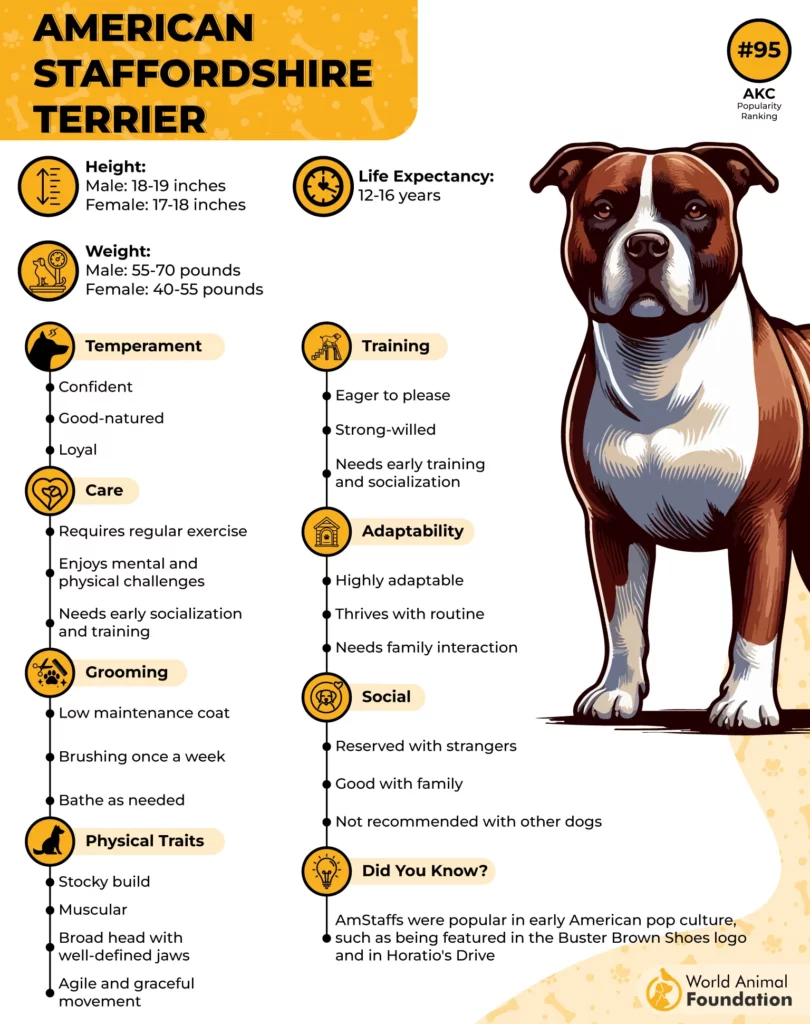
Why are they restricted?
Strong, muscular build associated with fighting Breeds
Often seen as high-risk regardless of individual temperament.
Banned by many airlines even with health certificates or documents of non-aggression.
American Staffordshire Terriers are frequently restricted from flying by airlines because of their brachycephalic (short-snouted) features. These physical traits can lead to serious health risks during air travel, including breathing difficulties, overheating, and circulation problems, especially in stressful or poorly ventilated conditions.
7. Brussels Griffon
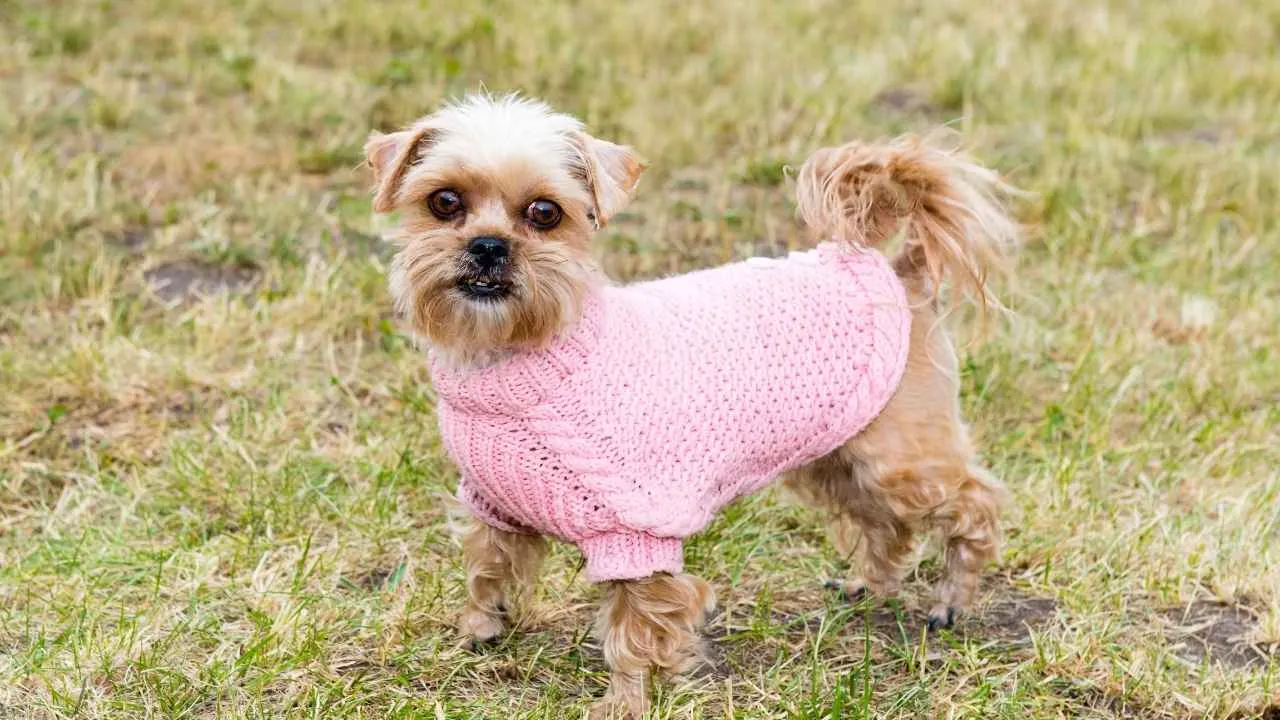
Breed Profile
Origin: Belgium
Height: 7-10 inches
Weight: 8-12 pounds
Lifespan: 12-15 years
Coat Types: Smooth (Brabancon) and Rough
Group: Toy Group (AKC)
The Brussels griffon is a small, expressive toy breed known for its big personality and distinctive bearded face. They are actually small dogs with beards. Despite their petite size, they are frequently listed among snub-nosed animals that are restricted from air travel, especially in Cargo.
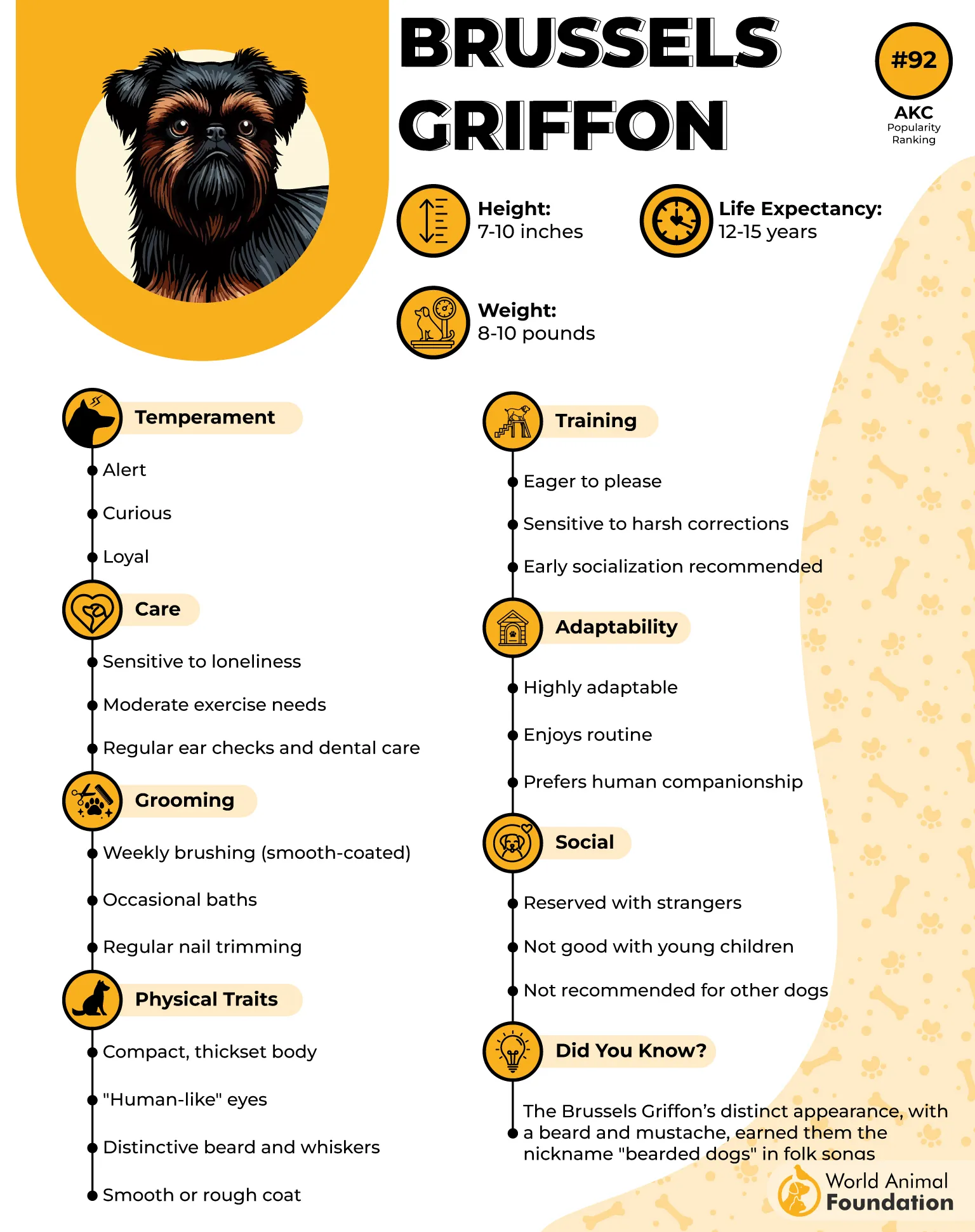
Why are they restricted?
They have a broad facial structure, leading to restricted airflow.
Struggle in low-ventilation areas due to short nasal passages.
Easily stressed, which worsens respiratory effort.
Known to suck hard when breathing under stress, increasing risk during flight.
Brussels Griffons have short noses and long tongues, which can cause airway obstructions and make breathing more difficult. During flights, reduced air pressure and lower oxygen levels can worsen these issues. They’re also prone to overheating and heatstroke—risks that are heightened by the stress of travel and the often warm conditions in cargo holds or airports.
Conclusion
When it comes to air travel, not all dogs and cats are treated the same. Airlines assess breed eligibility based on anatomy, behavior history, and public perception. While some restrictions apply to certain breeds like Anatolian shepherd dogs or Miniature bull terriers, others are affected due to their brachycephalic features, such as English bulldogs, Shar Pei shih tzu mixes, or the Japanese spaniel.
Even cats like the Burmese may be restricted due to their flat facial structure. Although it may seem unfair, these policies aim to protect the health and safety of your furry friend during flight.
Whether flying with all breeds is your goal or you are unsure about pets’ eligibility, always consult with your vet, secure a valid health certificate, and verify your airline’s breed restrictions. Sometimes, ground transport may be the safer, more compassionate alternative for your beloved companion.


